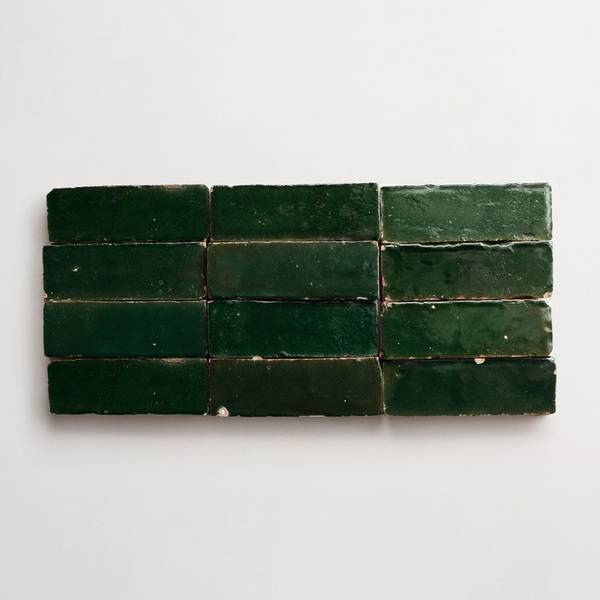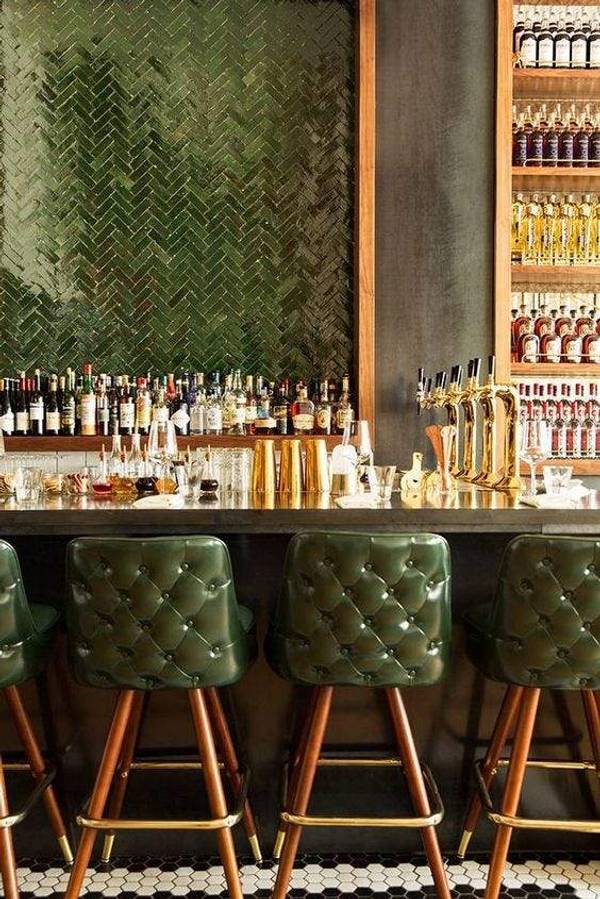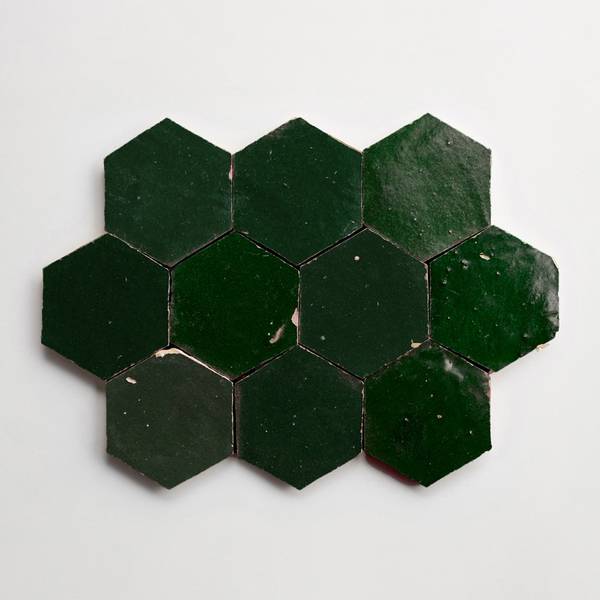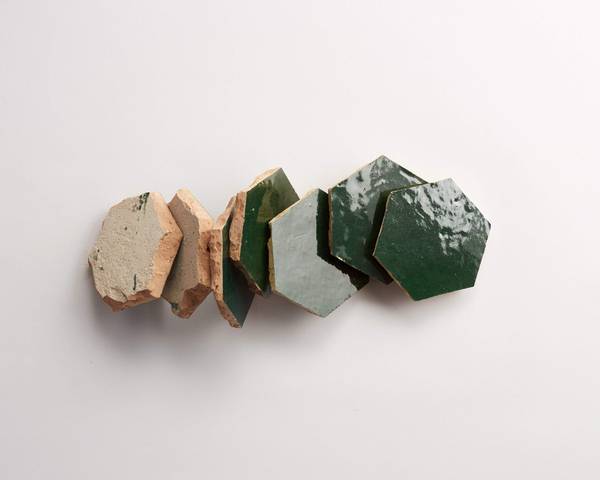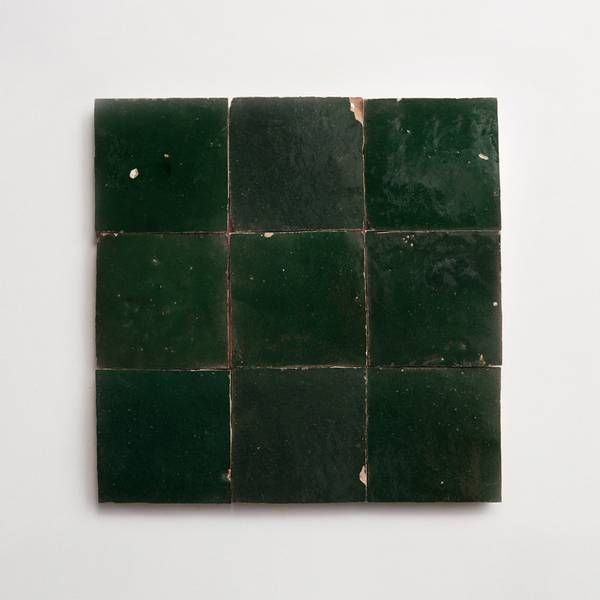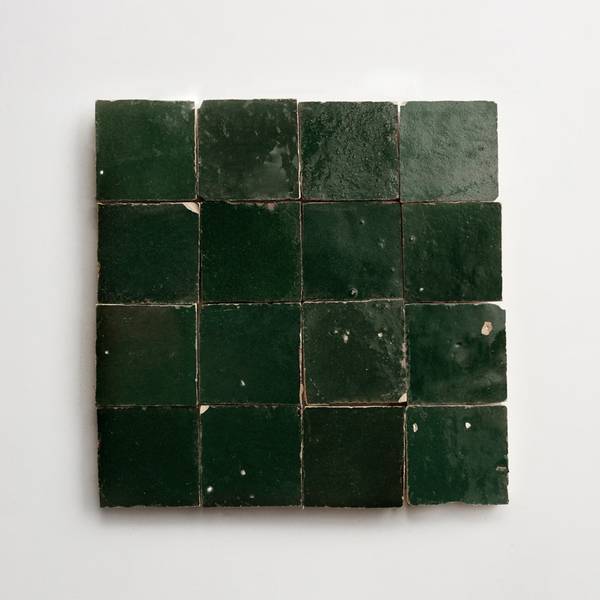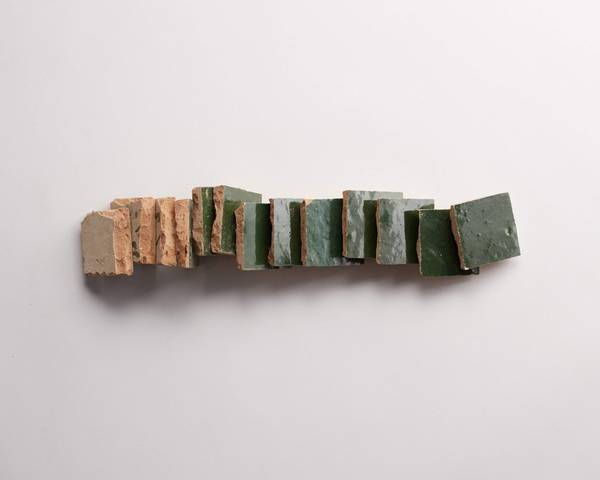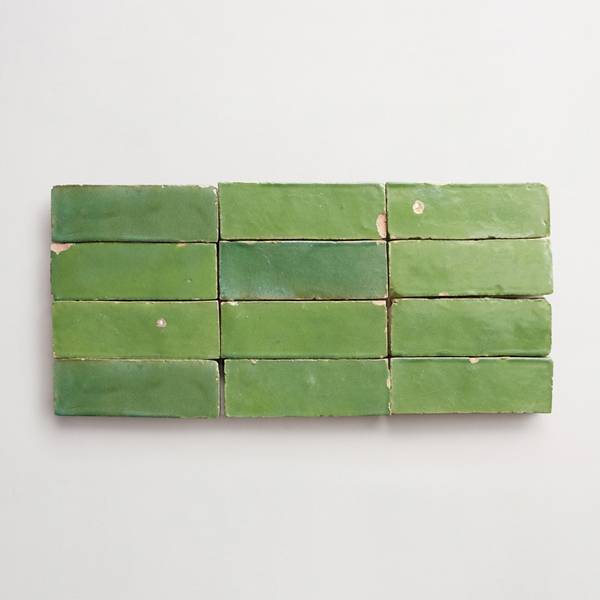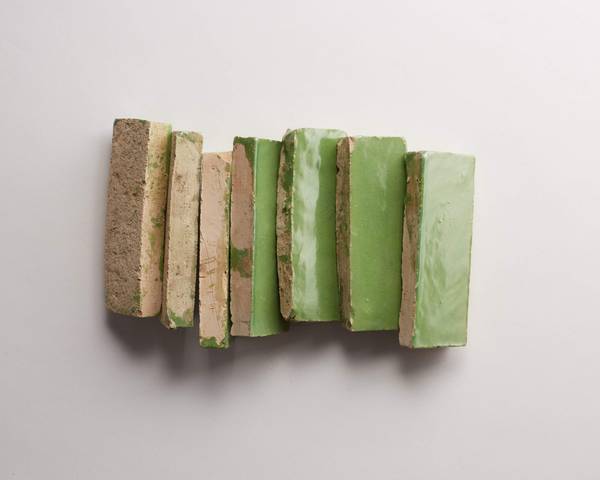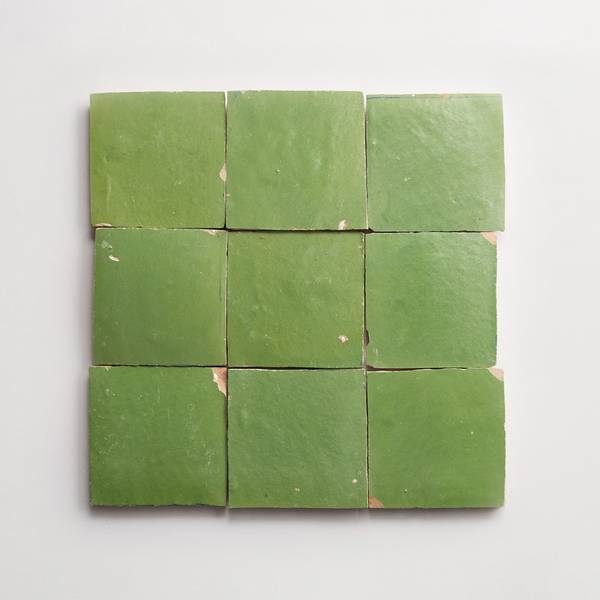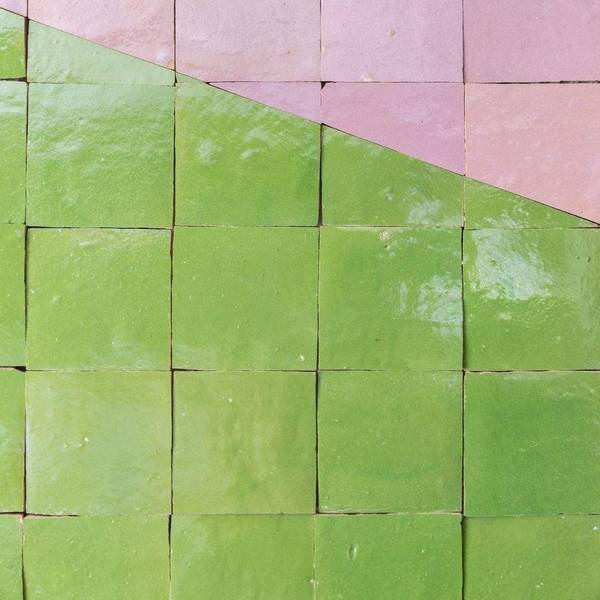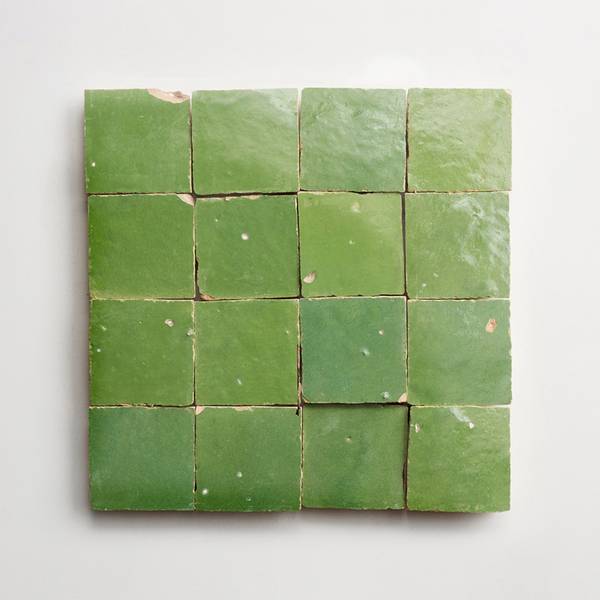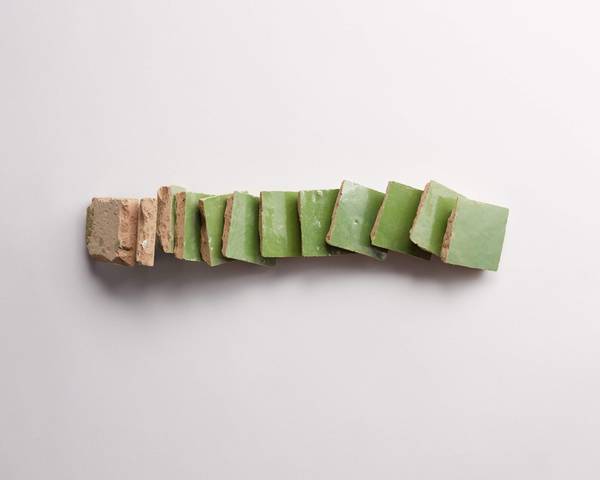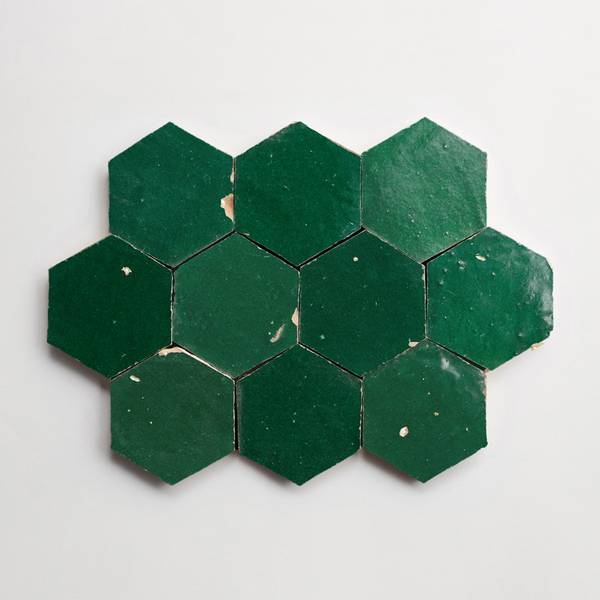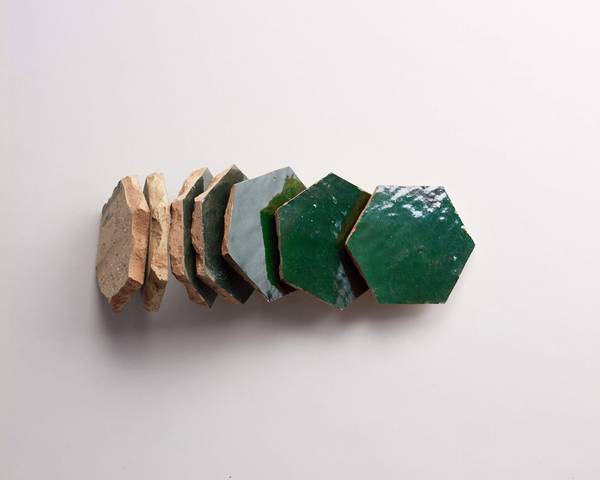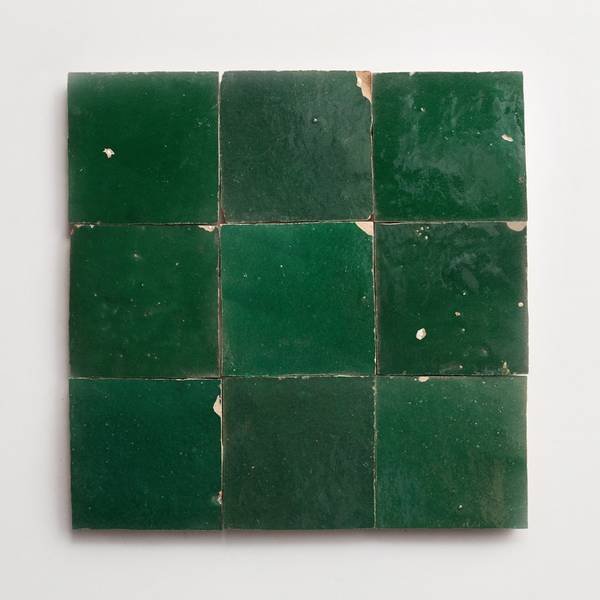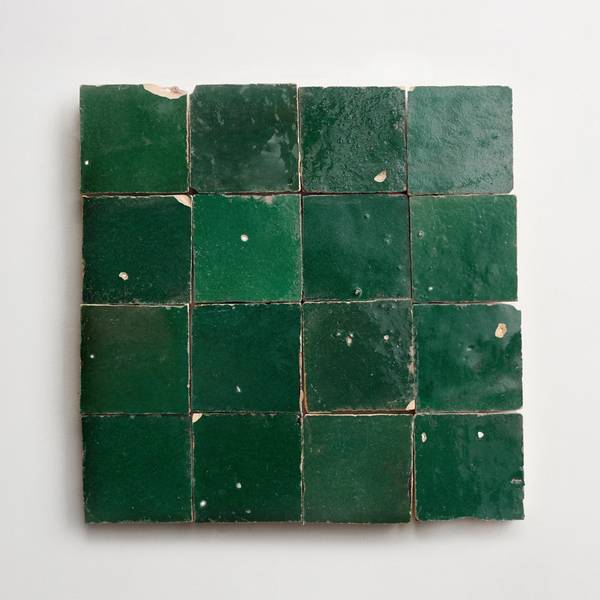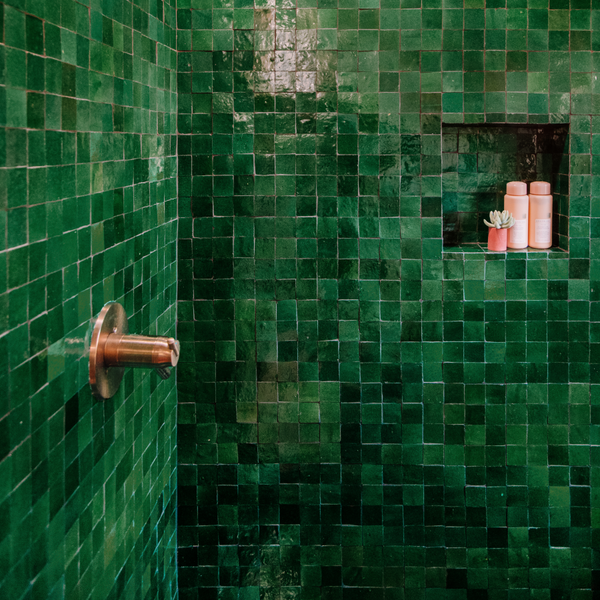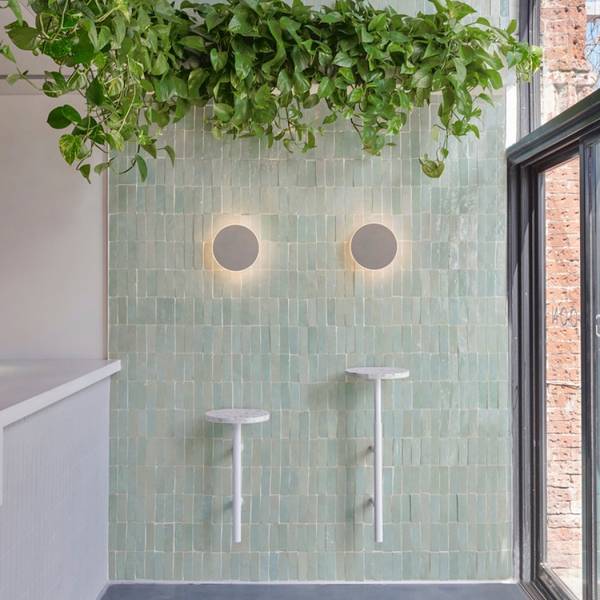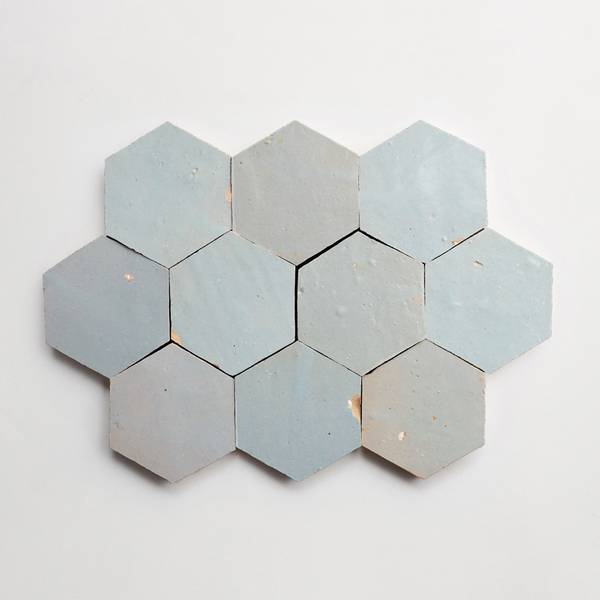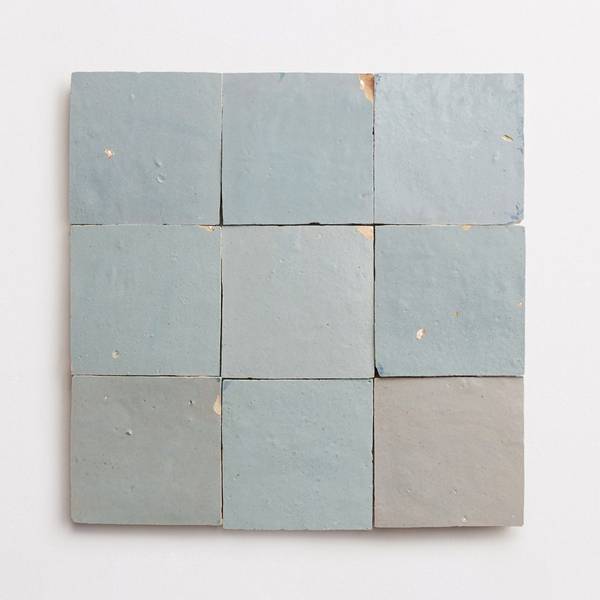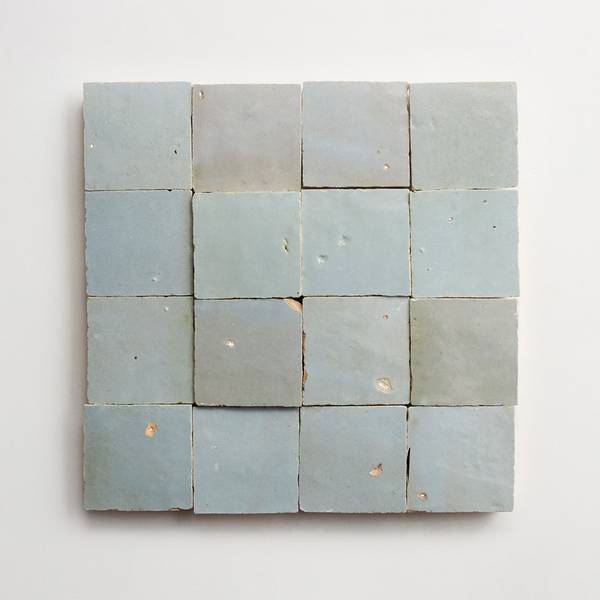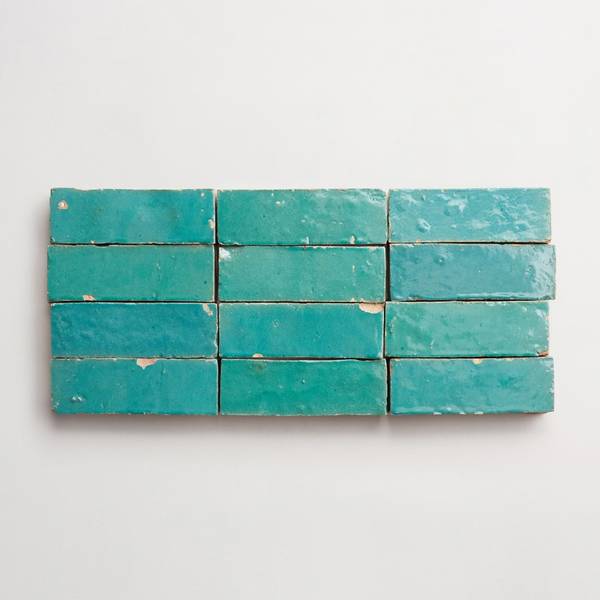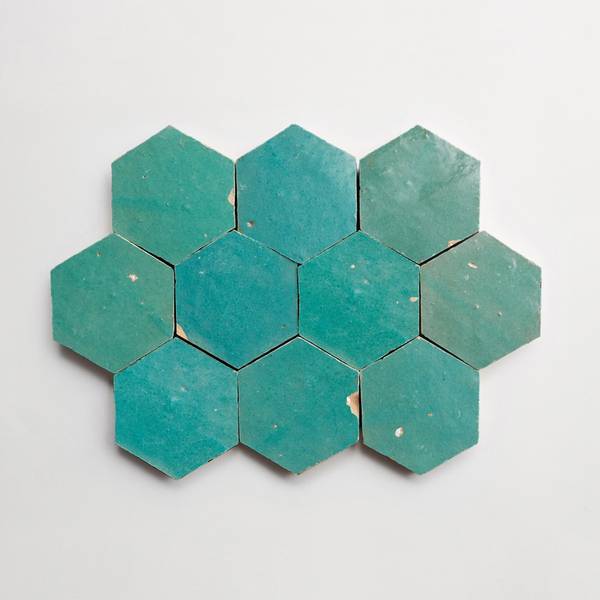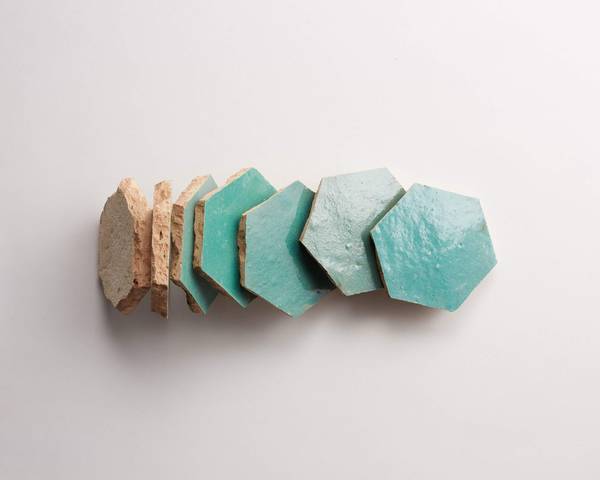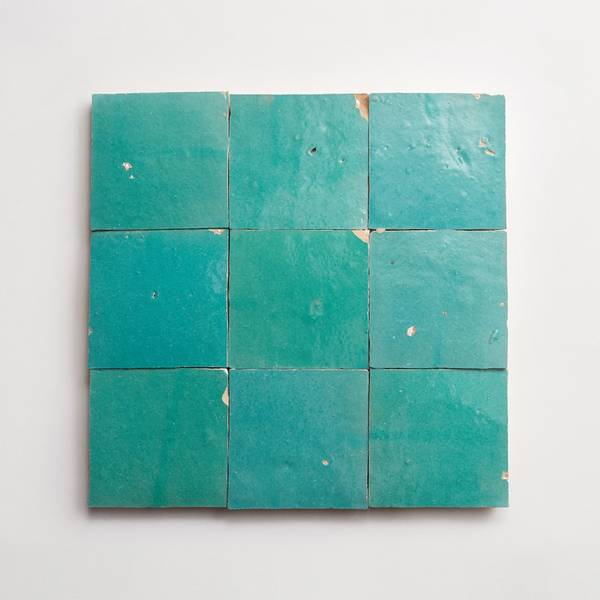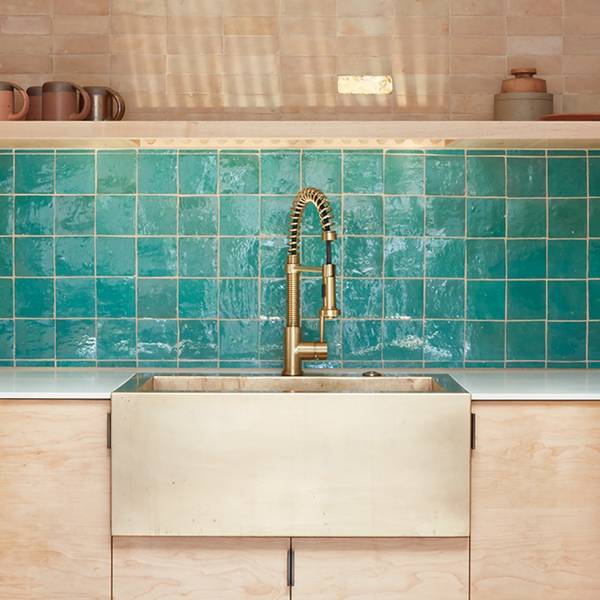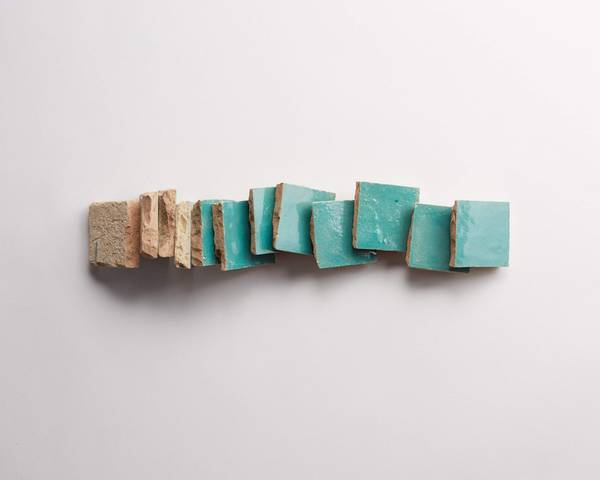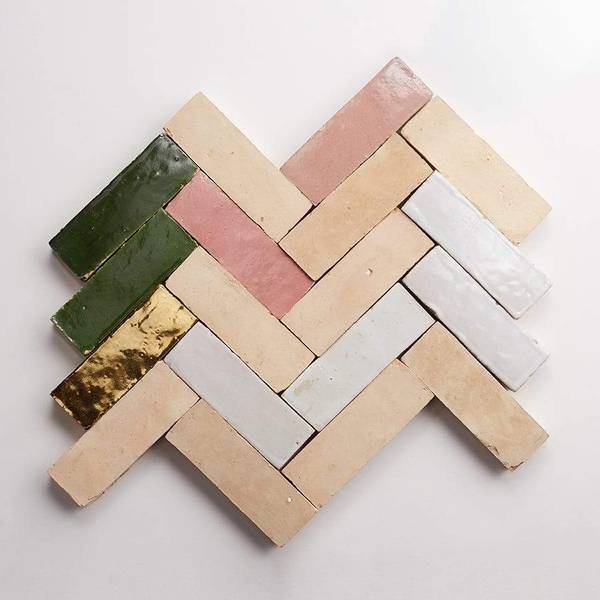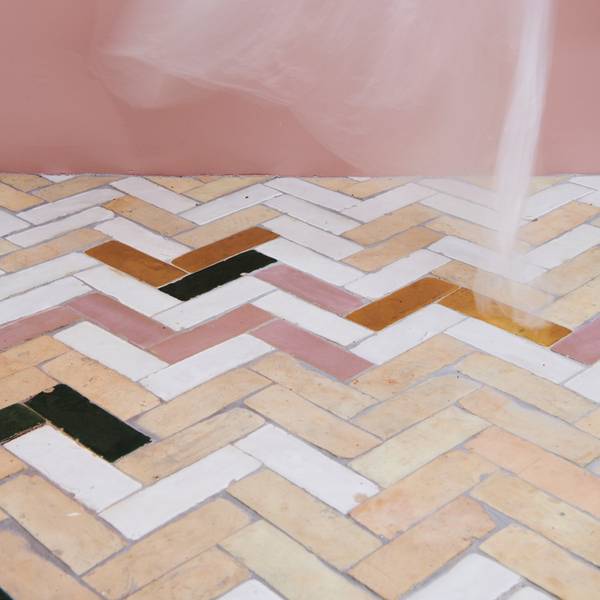Zellige tiles are quintessentially Moroccan. These intricate, glazed terracotta tiles feature complex geometric patterns created by skillfully chipping away at the tile surface. The art of zellige has been passed down for centuries, with artisans meticulously cutting each tile by hand.
The tiles range from solid colors to multicolored designs blending hues like turquoise, saffron and emerald green. Their luminous finish gives an artful, one-of-a-kind look to any space.
If zellige tiles are the artistic heart of Moroccan tilework, bejmat tiles are the sturdy backbone. Unglazed and made from dense terracotta, bejmat tiles exude rustic charm and handcrafted textures. Their earthy red and orange hues add warmth and character.
Bejmat tiles are exceptionally hardwearing, perfect for heavy traffic areas like entryways or patios. The slightly pitted surface provides slip resistance, making them ideal for bathroom floors, too.
For a contemporary take, Moroccan cement tiles are vividly colored, with mineral pigments tightly compressed into the surface for brilliant, fade-resistant designs. Floral and geometric motifs burst with personality in any hue imaginable.
Cement tiles are versatile for walls or floors and offer a smooth, polished finish. While not authentically "Moroccan" in origin, their bold patterns complement traditional tilework beautifully.
Arguably the most intricate and labor-intensive, mosaic zellij tilework features thousands of tiny zellige pieces painstakingly fitted together like an elaborate puzzle. Zellij mosaics adorn fountains, archways and other architectural elements with mesmerizing intricacy. Each zellij mosaic is a true work of art, displaying infinite variations of complex geometry.

